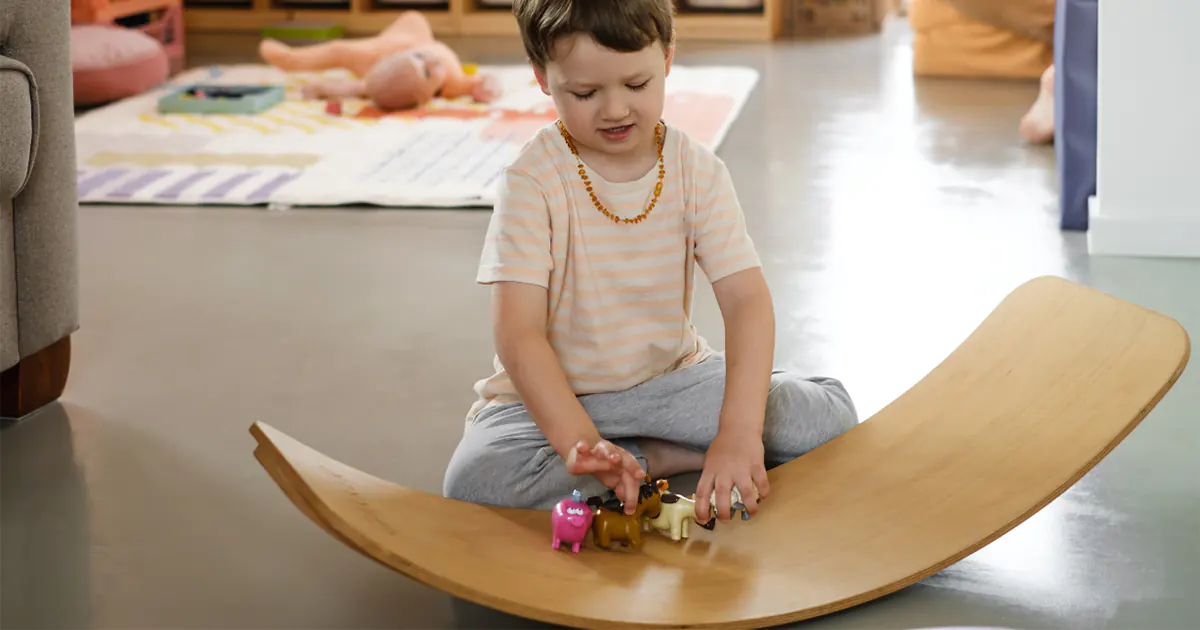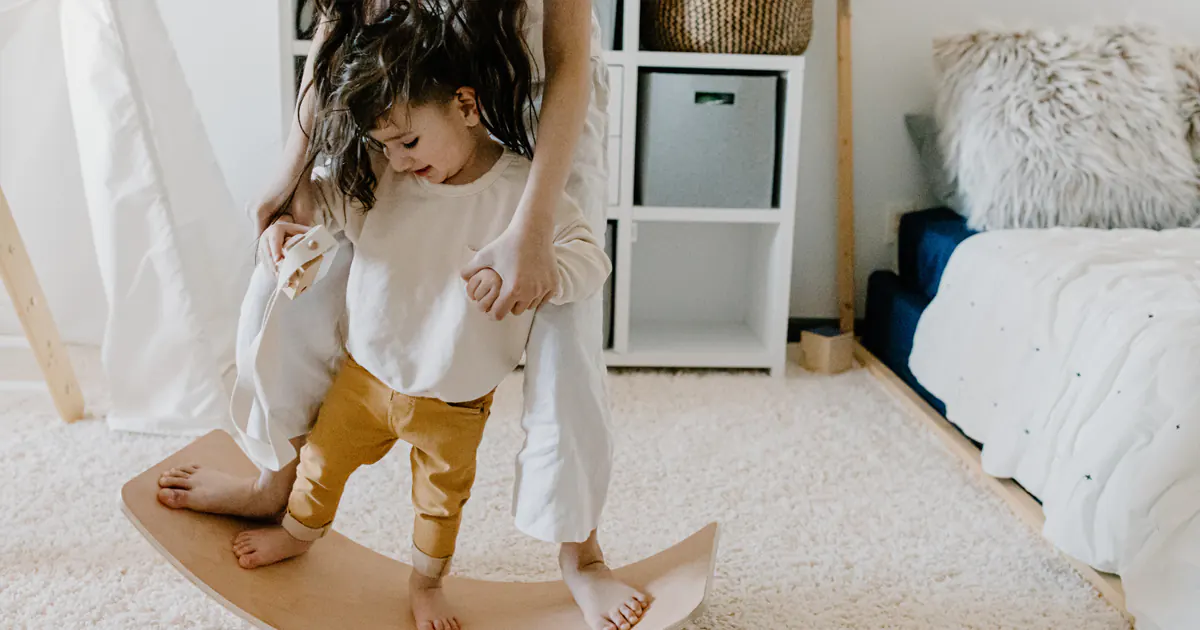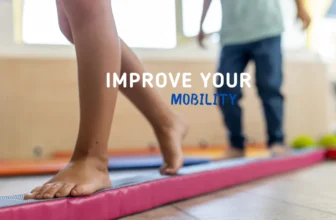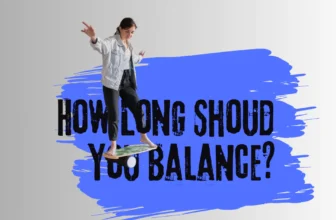As a parent, you always look for ways to help your child grow and develop new skills. One fantastic tool that often gets overlooked is the balance board. In this post, we’ll explore how these boards benefit children, answer common questions, and introduce you to some popular products on the market. So, let’s dive in and learn about the fantastic world of balance boards for kids, Montessori learning, and overall balancing benefits for everybody!
Are balance boards suitable for children?
Absolutely! Balance boards provide numerous benefits to children of all ages. Most worthy of mentioning are:
- Improved balance and coordination
- Enhanced core strength and stability
- Development of motor skills and body awareness
- Increased focus and concentration
- Encouragement of creativity and imaginative play
- Promotion of self-confidence and independence
These boards are a fun and engaging way for children to train and a powerful tool for aiding their independence and maintaining their imagination. It’s surprising how fast they go from barely staying on a board for a few seconds to comming up with some tricks and showing them to you or switching things entirely and making a wobble balance board into a slide or a chair.

At what age can children start using a balance board?
Most balance boards recommend toddler balance boards under adult supervision as early as 18 months. As they grow and gain confidence, they can transition to larger balance boards that are designed for various age groups. Choosing an age-appropriate board for your child and always supervising their playtime to ensure safety is essential.
Are balance boards safe?
Yes, balance boards are generally safe for children when used correctly and under adult supervision. To ensure safety:
- Choose an age-appropriate balance board
- Place the board on a non-slip surface or use a safety mat
- Most children’s boards are smooth finish, therefor appropriate footwear or being barefoot is essential
- Supervise playtime and provide assistance if needed
Following these safety precautions can minimize the risk of accidents and help your child enjoy the benefits of using a balance board.

How long should children stand on a balance board?
Determining the optimal duration for using a balance board depends on your child’s age, interests, and abilities. However, here are some general guidelines to help you make the most of your child’s balance board experience:
- Start with short sessions: Begin by encouraging your child to stand on the balance board for a few minutes at a time, gradually increasing the duration as they become more comfortable and confident.
- Focus on quality, not quantity: It’s more important to ensure that your child uses the balance board correctly and safely than to insist on long sessions.
- Incorporate balance board play into daily routines: Aim to include balance board activities in your child’s daily playtime. This could be as simple as standing on the board while watching TV.
- Listen to your child: Every child is unique, so pay attention to their preferences and comfort levels. Some children may enjoy spending more time on the balance board, while others prefer shorter, more focused sessions.
- Show attention: This is a new experience for your child, and he will want to share it with you. Be aware and present with him, and remember to cheer on his accomplishments.
- Make it fun: The more enjoyable the balance board experience, the more likely your child will engage with it regularly. Encourage creativity and playfulness to keep them interested and excited about using the board.
Remember, the key is to make the balance board play a consistent and enjoyable part of your child’s routine while always prioritizing safety. Following these guidelines will help your child gain balance boards’ numerous benefits.

Do balance boards build muscle?
Although balance boards are not a tool for building muscles, they target essential muscle groups, including:
- Core muscles, which provide stability and balance
- Leg muscles, including the quads, hamstrings, and calves
- Ankle and foot muscles crucial for balance and coordination
Will balancing lead to bigger muscles is uncertain. Still, as children use balance boards, you’ll notice an improvement in their overall fitness.
What are balancing activities good for?
Balancing activities offer children a wide range of benefits, making them an important part of their development. These activities are excellent for:
- Boosting motor skills: Balancing activities help develop gross motor skills, such as balance, coordination, and agility, as well as fine motor skills, like hand-eye coordination.
- Building strength: As mentioned earlier, balancing activities target various muscle groups, improving overall strength and fitness.
- Enhancing cognitive skills: These activities stimulate brain development, particularly in areas related to spatial awareness, problem-solving, and concentration.
- Promoting self-esteem: Successfully completing balancing tasks gives children a sense of accomplishment and builds their confidence.
- Encouraging social interaction: Group balancing activities create opportunities for children to work together, fostering cooperation, communication, and social skills.
- Inspiring creativity: Balancing play often sparks imaginative scenarios, allowing children to explore their creativity and exercise their minds.
With all these benefits, it’s clear that incorporating balancing activities into your child’s playtime can significantly impact their overall development.
How do balance boards help a child’s brain?
Balance boards have a significant impact on a child’s brain development. When children use a balancing toy, they engage multiple areas of their brain, including:
- The cerebellum responsible for balance and coordination
- The prefrontal cortex, involved in planning and decision-making
- The hippocampus critical for memory and spatial navigation
Using a balance board stimulates these areas, improving overall brain function and promoting the development of essential cognitive skills.
In Conclusion
Balance boards are an exceptional tool for promoting children’s physical, cognitive, and emotional development. By incorporating balance board activities into your child’s daily routine, you’re helping them enhance their balance and coordination and fostering their creativity, self-confidence, and social skills. So, why not give it a try? Encourage your little ones to embark on a balancing adventure that’ll support their growth and development in more ways than one!






